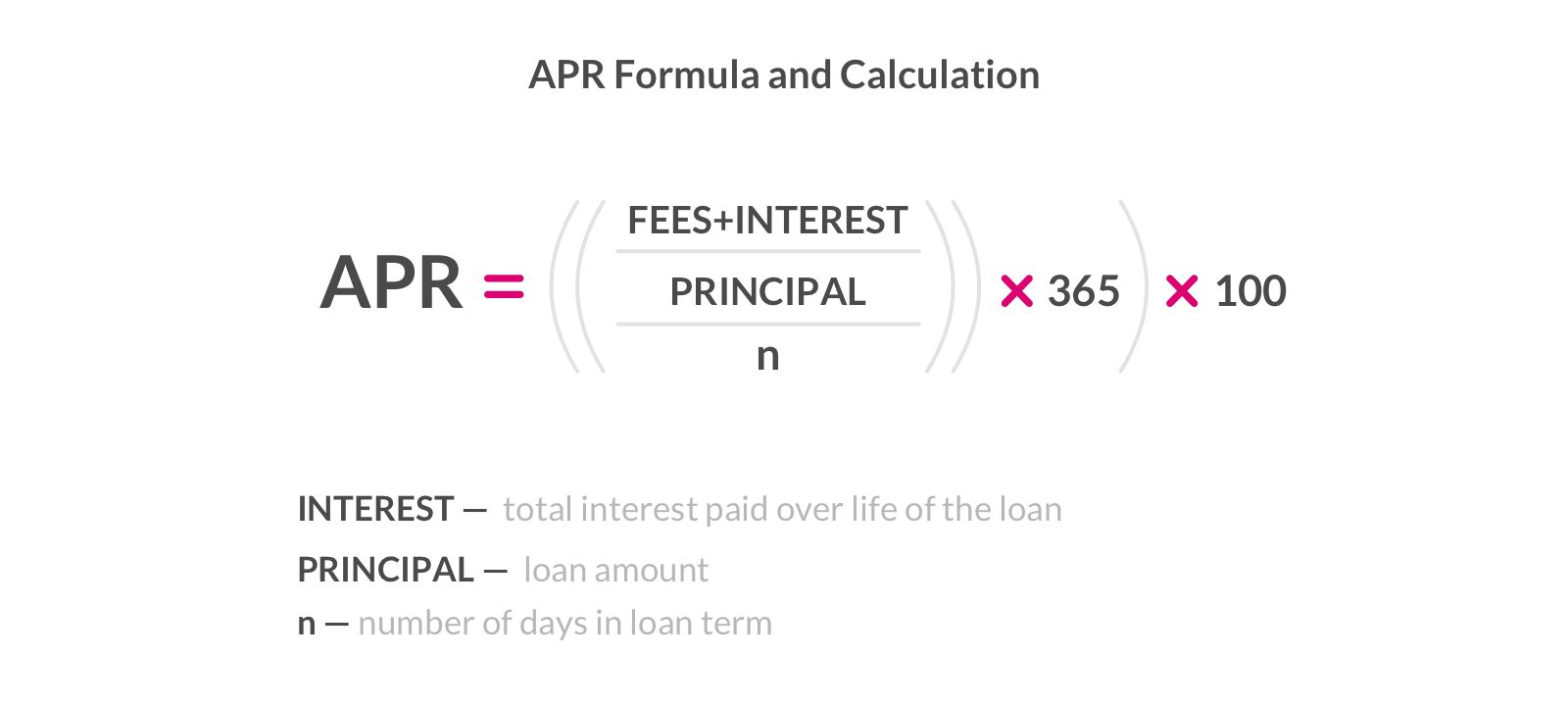

Finance
How To Get Into Insurance
Published: November 17, 2023
Learn how to break into the insurance industry and start a successful career in finance. Gain valuable insights and expert tips to navigate your path towards insurance success.
(Many of the links in this article redirect to a specific reviewed product. Your purchase of these products through affiliate links helps to generate commission for LiveWell, at no extra cost. Learn more)
Table of Contents
- Introduction
- Importance of Insurance
- Types of Insurance
- Researching Insurance Options
- Evaluating Insurance Needs
- Choosing an Insurance Provider
- Understanding Insurance Policies
- Obtaining Insurance Quotes
- Applying for Insurance
- Paying Insurance Premiums
- Reviewing and Updating Insurance Coverage
- Making Insurance Claims
- Tips for Getting the Best Insurance Coverage
- Conclusion
Introduction
Welcome to the world of insurance, where protection meets peace of mind. Whether you’re new to the concept or looking to expand your current coverage, understanding the ins and outs of insurance is key to securing your financial well-being.
Insurance is a financial tool that provides protection against potential risks and uncertainties. It acts as a safety net, offering financial assistance in the event of accidents, illnesses, or property damage. With insurance, you have the peace of mind that comes with knowing that you are financially safeguarded from unexpected circumstances.
Insurance can cover a wide range of areas, including health, life, auto, home, and business. In this article, we will delve into the different types of insurance, how to research and evaluate insurance options, and essential tips for obtaining the best coverage. Whether you’re looking to insure your home, protect your family’s well-being, or safeguard your business, this guide will provide you with the knowledge you need to make informed decisions.
Choosing the right insurance policy requires careful consideration of your personal needs, financial situation, and risk tolerance. It’s important to thoroughly research and understand your options before making a decision. By doing so, you can ensure that you have the appropriate coverage in place to protect your assets and loved ones.
Insurance companies play a vital role in this process. They assess your needs, calculate the associated risks, and provide you with a policy that suits your requirements. Selecting a reputable and reliable insurance provider is crucial. Look for a company with a strong track record, excellent customer service, and a range of comprehensive coverage options.
Throughout this guide, we will provide you with insights and strategies to navigate the world of insurance confidently. We’ll discuss the importance of insurance, explain the different types available, and guide you through the process of obtaining the coverage you need. So, let’s dive in and explore the world of insurance together!
Importance of Insurance
Insurance is essential for both individuals and businesses, offering numerous benefits and serving as a critical component of financial planning. Here are some key reasons why insurance is important:
1. Financial Protection: Insurance provides a safety net against unexpected events that can have significant financial consequences. Whether it’s a medical emergency, a natural disaster, or a car accident, insurance can help cover the costs and mitigate the financial burden.
2. Asset Protection: Insurance allows you to protect your valuable assets, such as your home, car, or business. In the event of damage or loss, insurance provides the means to repair or replace these assets, saving you from bearing the full financial impact.
3. Healthcare Coverage: Health insurance is crucial for individuals and families, as it helps cover medical expenses and ensures access to quality healthcare. Without proper health insurance, medical bills can quickly add up and lead to financial hardship.
4. Legal Protection: Insurance can offer legal protection, especially in liability cases. For businesses, having liability insurance protects against potential lawsuits arising from accidents or injuries that occur on their premises.
5. Peace of Mind: Knowing that you have insurance coverage can bring peace of mind, reducing stress and anxiety. It allows you to focus on other aspects of your life or business without constantly worrying about potential financial risks.
6. Business Continuity: For businesses, insurance plays a crucial role in ensuring continuity of operations. Whether it’s property insurance, business interruption coverage, or liability protection, having the right insurance allows businesses to recover from setbacks and resume normal operations in a timely manner.
7. Mandatory Requirements: In many cases, insurance is a legal requirement. For example, auto insurance is mandatory in most jurisdictions to protect both drivers and third parties in the event of an accident. Failure to comply with these requirements can result in fines or other legal consequences.
8. Peace of Mind for Loved Ones: Life insurance offers financial protection to your loved ones in the event of your passing. It provides them with the necessary funds to cover funeral expenses, outstanding debts, and ongoing living expenses, ensuring their financial security.
In summary, insurance is important because it protects your finances, assets, and well-being. It provides a safety net against unexpected events and offers peace of mind. Whether it’s protecting your home, business, health, or loved ones, having the right insurance coverage is a smart and responsible decision. Remember, prevention is always better than cure, and insurance is the key to proactive financial protection.
Types of Insurance
Insurance comes in various forms, each designed to address specific needs and risks. Here are some of the most common types of insurance:
1. Health Insurance: Health insurance covers medical expenses, including hospital visits, doctor consultations, prescription medications, and preventive care. It helps individuals and families afford the rising costs of healthcare while ensuring access to necessary treatments and procedures.
2. Life Insurance: Life insurance provides a financial payout to beneficiaries upon the policyholder’s death. It helps protect the financial well-being of loved ones by covering funeral costs, outstanding debts, and ongoing living expenses. There are different types of life insurance, including term life insurance and whole life insurance.
3. Auto Insurance: Auto insurance protects against damage or loss to your vehicle in the event of an accident, theft, or vandalism. It also provides liability coverage in case you are responsible for causing injury or damage to others in a car accident.
4. Homeowner’s Insurance: Homeowner’s insurance covers your home and its contents against damage or loss, including theft, fire, natural disasters, and liability for injuries that occur on your property. It also provides additional living expenses if your home becomes uninhabitable.
5. Renter’s Insurance: Renter’s insurance is designed for tenants and covers personal belongings and liability in the event of theft, fire, or other covered perils. It also provides temporary living expenses if you need to vacate the rental property due to covered damage.
6. Business Insurance: Business insurance protects businesses from various risks, such as property damage, liability claims, and business interruption. It can include property insurance, general liability insurance, professional liability insurance, and more, depending on the specific needs of the business.
7. Travel Insurance: Travel insurance provides coverage for unexpected events while traveling, such as trip cancellation, medical emergencies, lost luggage, and travel delays. It offers peace of mind and financial protection when you’re away from home.
8. Disability Insurance: Disability insurance provides income replacement if you become unable to work due to an illness or injury. It ensures that you continue to have a source of income to cover living expenses until you can return to work.
9. Long-Term Care Insurance: Long-term care insurance addresses the costs associated with extended medical or personal care services, typically required as individuals age or develop chronic illnesses. It covers expenses related to nursing homes, assisted living facilities, and in-home care.
These are just a few examples of the many types of insurance available. The specific coverage offered within each type can vary, so it’s essential to carefully review policies and consult with insurance professionals to ensure you have the right coverage for your unique needs. Remember, insurance is not one-size-fits-all, and understanding the different types will help you make informed decisions about your insurance portfolio.
Researching Insurance Options
When it comes to insurance, finding the right coverage at the best value requires diligent research and comparison. Here are some steps to help you research insurance options:
1. Identify your Insurance Needs: Begin by understanding your specific insurance requirements. Assess your assets, risks, and budget to determine the types and amount of coverage you need. Consider factors such as your health condition, the value of your property, and the level of liability protection required.
2. Seek Recommendations: Ask for recommendations from friends, family, or professionals who have experience with insurance. They may share insights, tips, and recommendations on reputable insurers or policies.
3. Check Online Insurance Comparison Platforms: Utilize online insurance comparison platforms to gather information on various insurance providers. These platforms allow you to compare coverage options, premiums, and user reviews to help you make an informed decision.
4. Research Insurance Companies: Look into the financial stability, reputation, and track record of insurance companies you’re considering. Visit their websites, read customer testimonials, and check independent rating agencies such as A.M. Best or Standard & Poor’s to assess their financial strength.
5. Review Policy Details: Once you identify potential insurance providers, carefully review their policy details. Pay attention to coverage limitations, exclusions, deductibles, and any additional benefits or riders that may be relevant to your needs.
6. Consider Customer Service and Claims Process: Look for insurance companies known for excellent customer service and a smooth claims process. Check online reviews to gauge customer experiences and their satisfaction with the company’s handling of claims.
7. Get Quotes: Request quotes from multiple insurance providers to compare premiums and coverage options. Provide accurate information to receive accurate quotes. Keep in mind that the cheapest option may not always offer the best coverage, so weigh the cost against the benefits.
8. Consult with Insurance Professionals: If you have complex insurance needs or are unsure about certain aspects, consider consulting with insurance professionals such as brokers or agents who can provide personalized advice and guidance.
9. Understand Policy Terms and Conditions: Take the time to thoroughly read and understand the terms and conditions of the policy. Pay attention to the fine print and ask for clarification on any unclear aspects before making a decision.
10. Compare Coverage and Cost: Compare the coverage offered by different insurance providers, taking into account their financial stability, reputation, customer service, and claims process. Assess the costs against the coverage provided to determine the best value for your needs.
Remember, insurance is a long-term commitment, so conducting thorough research and due diligence is essential to ensure you have the right coverage to protect your assets and provide peace of mind. Take the time to compare options, ask questions, and seek professional advice as needed.
Evaluating Insurance Needs
Before diving into the world of insurance, it’s crucial to evaluate your specific insurance needs to ensure you have the right coverage. Here are some steps to help you evaluate your insurance needs:
1. Assess Your Risks: Start by identifying the risks you face in your personal life or business. Consider factors such as your health, the value of your assets (such as your home or car), your occupation, and your overall financial situation. Understanding your risks will help determine the appropriate types and levels of insurance coverage you need.
2. Evaluate Legal Requirements: Determine if there are any legal obligations or requirements for specific types of insurance. For example, auto insurance is mandatory in most jurisdictions. Make sure you comply with these requirements to avoid penalties or legal consequences.
3. Consider Existing Coverage: Evaluate any existing insurance coverage you may have. Check your health insurance policy, employer-provided insurance, or any other coverage you already have in place. This will help you avoid duplicating coverage or identify gaps that need to be addressed.
4. Calculate Insurance Coverage Amounts: Determine the appropriate coverage amounts for each type of insurance you require. For example, when evaluating life insurance, consider factors such as outstanding debts, funeral expenses, and the financial needs of your dependents in case of your untimely death. For home insurance, assess the replacement cost of your home and its contents.
5. Consider Deductibles and Premiums: Evaluate your financial capacity to pay deductibles and premiums. Higher deductibles can lower your premiums but require you to pay more out of pocket in the event of a claim. Find the right balance that aligns with your budget and risk tolerance.
6. Account for Future Changes: Anticipate any changes in your circumstance that may affect your insurance needs. For instance, if you plan to start a family or launch a business, you may require additional coverage to protect against new risks.
7. Special Considerations: Depending on your circumstances, there may be specific insurance needs to consider. For example, if you engage in risky activities or have unique possessions, such as art or jewelry, you may need additional coverage to protect them adequately.
8. Seek Advice from Professionals: If evaluating your insurance needs feels overwhelming, consider consulting insurance professionals such as agents or brokers. They can provide valuable insights tailored to your specific situation and recommend appropriate coverage options.
Remember, the goal of evaluating your insurance needs is to ensure you have adequate coverage in place to protect yourself, your loved ones, and your assets. Regularly reassess your insurance needs as your circumstances evolve to ensure you remain adequately protected.
Choosing an Insurance Provider
Choosing the right insurance provider is essential to ensure the reliability, quality, and effectiveness of your insurance coverage. Here are some factors to consider when choosing an insurance provider:
1. Reputation and Financial Stability: Research the insurance provider’s reputation in the industry. Look for companies with a strong financial track record and stability. Independent rating agencies such as A.M. Best or Standard & Poor’s can provide insights into an insurer’s financial health and ability to pay claims.
2. Customer Reviews and Ratings: Read customer reviews and ratings to gauge customer satisfaction and the overall experience of dealing with the insurance provider. Look for feedback on the claims process, customer service, and responsiveness.
3. Range of Coverage Options: Ensure the insurance provider offers the specific type of coverage you need. Consider their policy offerings, coverage limits, and any additional options or riders that may be relevant to your requirements.
4. Network of Providers and Services: If you’re considering health insurance, evaluate the provider’s network of doctors, hospitals, and healthcare providers. Ensure they have a wide network that includes professionals and facilities that you prefer or are easily accessible to you.
5. Customer Service and Support: Evaluate the insurance provider’s customer service and support channels. Consider factors such as ease of contacting them, response times, and the availability of knowledgeable representatives to answer your questions and assist with claims or policy inquiries.
6. Claims Handling Process: Look for an insurance provider known for a smooth claims handling process. Research how quickly and efficiently they process claims and resolve issues. An efficient claims process can significantly impact your overall experience should you need to file a claim.
7. Price and Affordability: While price should not be the sole determining factor, consider the affordability and competitiveness of the insurance provider’s premiums. Obtain quotes from multiple insurers to compare prices, taking into account the coverage and level of service provided.
8. Transparency and Communication: Assess whether the insurance provider is transparent about their policies, terms, and conditions. Ensure they communicate clearly and provide all the necessary information upfront. Transparency is crucial for understanding your rights and responsibilities as a policyholder.
9. Additional Benefits and Services: Some insurance providers offer extra benefits or services beyond basic coverage. These may include wellness programs, discounts, or value-added services. Consider these additional perks when comparing providers.
10. Recommendations and Referrals: Seek recommendations from trusted sources such as friends, family, or professionals who have experience with the insurance provider. Their firsthand experiences can provide valuable insights and help you make an informed decision.
Choosing an insurance provider requires careful consideration and research. Ensure that the company aligns with your specific needs, offers reliable customer service, and has a solid reputation in the industry. By doing so, you can have peace of mind knowing that your insurance needs are in capable hands.
Understanding Insurance Policies
Insurance policies can be complex, filled with legal jargon and technical terms. Understanding the key components of an insurance policy is essential to ensure you have the right coverage and know what to expect in case of a claim. Here are some important elements to consider when reviewing and understanding insurance policies:
1. Policy Declarations: The policy declarations provide an overview of your coverage, including the insured parties, policy effective dates, coverage limits, and the premium amount. It’s important to carefully review this section to ensure all the information is accurate.
2. Coverage Overview: The coverage overview section outlines the specific risks and events that are covered under the policy. It’s crucial to understand these coverages and their limitations to ensure they align with your needs.
3. Exclusions: Exclusions are events or circumstances that are not covered by the policy. It’s important to review the list of exclusions to understand what risks are not covered. This will help you identify any gaps in coverage and make an informed decision about additional coverage needed.
4. Deductibles: The deductible is the amount you must pay out of pocket before the insurance coverage kicks in. Review the deductible amount and understand how it applies to your policy. Higher deductibles typically result in lower premiums but require you to pay more in the event of a claim.
5. Policy Limits: Policy limits refer to the maximum amount an insurance company will pay for covered losses. It’s important to assess if the policy limits are sufficient to cover potential losses and if additional coverage or higher limits are necessary.
6. Conditions: The conditions section outlines the obligations and responsibilities of the policyholder and the insurance company. It may include requirements such as notifying the insurer of a claim within a specified timeframe or cooperating fully during the claims process. Understanding these conditions will help you fulfill your obligations as a policyholder.
7. Endorsements or Riders: Endorsements or riders are additional provisions that modify or expand the coverage provided in the base policy. Review these additions to understand if they are included in your policy and if they address any specific needs you may have.
8. Policy Renewal: Understand the renewal process for your insurance policy, including any policy changes, premium adjustments, or the right to cancel. Review renewal terms to ensure your coverage remains in effect as needed.
9. Cancellation and Termination: Familiarize yourself with the conditions under which the insurance policy can be canceled or terminated. Understanding these terms will help you be aware of any potential ramifications or refund policies.
10. Contact Information: Take note of the contact information for the insurance company, including their customer service hotline, claims department, and any other relevant contact details. This information will be crucial when filing a claim or seeking assistance.
If you find the policy language challenging to understand, consider seeking clarification from the insurance provider or consulting with an insurance professional. Remember, full comprehension of your insurance policy is crucial to ensure you have the coverage you need and can effectively navigate the claims process if necessary.
Obtaining Insurance Quotes
Obtaining insurance quotes is an important step in finding the right coverage for your needs. It allows you to compare premiums, coverage options, and terms from different insurance providers. Here are some tips for obtaining insurance quotes:
1. Gather Relevant Information: Before reaching out to insurance providers, gather all the necessary information related to the coverage you need. This may include details about your property, vehicle, or personal information such as age, health condition, or occupation. Having this information ready will ensure accurate quotes.
2. Contact Multiple Insurance Providers: Reach out to multiple insurance providers to compare quotes. Consider contacting traditional insurance companies, online insurance providers, or working with an insurance broker who can gather quotes on your behalf.
3. Online Quote Tools: Take advantage of online quote tools offered by insurance companies. These tools typically require you to input your information and coverage needs, after which you will receive an estimated quote. Remember that online quotes may not always provide the most accurate information, so additional follow-up may be required.
4. Be Accurate and Detailed: When requesting quotes, provide accurate and detailed information to ensure the quotes are as precise as possible. Any inaccuracies or omissions may lead to misleading quotes or potential issues when filing a claim in the future.
5. Understand the Coverage: Make sure you understand the coverage being quoted. Review the coverage limits, deductibles, and any additional provisions or riders included in the quote. This will help you assess the overall value and relevance of the quote to your needs.
6. Ask Questions: Don’t be afraid to ask questions. Seek clarification on any terms, conditions, or coverage details that you do not understand. A reputable insurance provider will be happy to provide the necessary information and address any concerns you may have.
7. Compare Apples to Apples: When comparing quotes, ensure you are comparing similar coverage options. Evaluate the coverage limits, deductibles, and any additional services or benefits included in each quote. It’s important to consider both the cost and the value of the coverage being provided.
8. Consider the Insurance Provider’s Reputation: While cost is an important factor, also consider the insurance provider’s reputation and financial stability. Look for online reviews, check their ratings from independent rating agencies, and consider their overall reputation in the market.
9. Consult with an Insurance Professional: If you find the process overwhelming or want expert guidance, consider consulting with an insurance professional such as an agent or broker. They can assist in obtaining quotes tailored to your needs and help you navigate through the complexities of insurance coverage.
10. Review and Re-evaluate Regularly: Insurance quotes and policies should not be a one-time consideration. Review your coverage periodically and reassess your needs to ensure your insurance coverage remains relevant and offers sufficient protection.
Remember, obtaining insurance quotes is an essential step in finding the right coverage. Take the time to gather quotes from multiple providers, review them carefully, and ask questions to make informed decisions based on your specific needs and circumstances.
Applying for Insurance
Once you have chosen an insurance provider and decided on the coverage that suits your needs, the next step is to apply for insurance. The application process may vary depending on the type of insurance you are seeking. Here are some general steps to follow when applying for insurance:
1. Complete the Application Form: Start by filling out the application form provided by the insurance company. The form will require you to provide personal information, such as your name, address, date of birth, and contact details. Be sure to provide accurate and up-to-date information.
2. Provide Relevant Documentation: Depending on the type of insurance you are applying for, you may need to provide supporting documents. This could include identification documents, medical records, vehicle details, or any other information specific to your insurance needs. Consult with the insurance provider to determine what documentation is required.
3. Disclose Relevant Information: Honesty is critical during the application process. Disclose all relevant information truthfully and completely. Failure to provide accurate information may result in a denial of coverage or potential issues when filing a claim later on.
4. Undergo Medical Evaluations (if necessary): For certain types of insurance, such as life or health insurance, you may be required to undergo a medical evaluation. This could involve providing medical history, undergoing medical tests, or even a medical examination by a healthcare professional. Follow the insurer’s instructions and cooperate fully during this process.
5. Review the Application: Before submitting the application, carefully review all the information provided. Double-check for any errors or omissions. Making sure the application is complete and accurate will help avoid delays or complications in the underwriting process.
6. Pay the Premium: Once the application is reviewed and accepted by the insurance company, you will be required to pay the premium. Payment details and options will be provided by the insurer. It’s important to make the premium payment within the specified timeframe to ensure your coverage starts as intended.
7. Receive Confirmation and Policy Documents: After your application is approved and the premium is paid, you will receive confirmation of your coverage. This may come in the form of policy documents, an insurance certificate, or other relevant paperwork. Review these documents carefully to ensure they accurately reflect the coverage you applied for.
8. Keep Copies of Documents: Make copies of all the relevant application materials, including the completed application form, supporting documents, payment receipts, and the policy documents you receive. Having copies of these documents will be helpful for reference and future claims.
Remember, the application process may differ depending on the type of insurance and the insurance provider. It’s important to carefully follow the instructions provided by the insurer and seek clarification if you have any questions. Applying for insurance is an important step in securing your financial protection, so take the time to complete the application accurately and comprehensively.
Paying Insurance Premiums
Paying insurance premiums is a crucial part of maintaining your insurance coverage. Whether it’s for health, auto, home, or any other type of insurance, timely premium payments ensure that your policy remains in force. Here are some key points to consider when paying insurance premiums:
1. Payment Options: Insurance companies usually offer a variety of payment options, such as online payments, direct debit, credit card payments, or traditional paper checks. Choose the payment method that is most convenient and suits your preferences.
2. Payment Frequency: Determine the frequency of premium payments based on the options provided by your insurance provider. Premiums can typically be paid on a monthly, quarterly, semi-annual, or annual basis. Select the payment frequency that aligns with your budget and financial planning.
3. Payment Due Dates: Pay attention to the due dates for premium payments. It’s important to make payments before or on the specified due date to avoid any lapses in coverage. Consider setting reminders or opting for automatic payment options to ensure timely payments.
4. Grace Period: Familiarize yourself with any grace period offered by your insurance provider. A grace period is a specified amount of time after the due date during which you can still make the payment without penalties or coverage termination. Be aware of the grace period and ensure payments are made within this timeframe to maintain uninterrupted coverage.
5. Budgeting for Premiums: Incorporate insurance premiums into your budgeting process. Consider the cost of premiums when planning your overall expenses to ensure you have sufficient funds available to make timely payments.
6. Review Premium Amounts: Regularly review the premium amounts stated in your insurance policy documents and billing statements. If there are any discrepancies or unexpected changes, contact your insurance provider for clarification. It’s important to understand the factors that may impact premium changes, such as policy updates, changes in coverage, or rate adjustments.
7. Notify the Insurer of Payment Changes: If you change your payment method or bank account, be sure to notify the insurance provider promptly. Keep them informed to avoid any issues with processing payments or having incorrect billing details.
8. Automatic Payment Options: Consider opting for automatic payment options, such as direct debit or automatic credit card payments. This can help ensure premiums are paid on time and eliminate the risk of missing due dates or forgetting to make payments.
9. Keep Records of Payments: Maintain accurate records of premium payments. Keep copies of receipts, billing statements, or any electronic payment confirmations. These records will serve as proof of payment and can be helpful for reference or if there are any disputes or discrepancies in the future.
10. Address Payment Issues Promptly: If you encounter any difficulties in paying your insurance premiums, such as financial hardships or unexpected circumstances, contact your insurance provider as soon as possible. They may be able to offer alternative payment arrangements or discuss options to help address your situation.
Remember, paying insurance premiums on time is essential to maintain continuous coverage and ensure the benefits and protection outlined in your policy. By staying organized, budgeting appropriately, and being proactive in managing premium payments, you can enjoy the peace of mind that comes with having your insurance coverage in place.
Reviewing and Updating Insurance Coverage
Reviewing and updating your insurance coverage regularly is crucial to ensure that your policies remain relevant and continue to meet your needs. Insurance needs can change over time due to various factors, such as life events, changes in assets, or evolving risks. Here are some important considerations when reviewing and updating your insurance coverage:
1. Periodic Reviews: Set a schedule to review your insurance coverage annually or whenever significant changes occur in your life or financial situation. This will ensure that your coverage remains up-to-date and aligned with your current needs.
2. Assess Life Changes: Consider major life changes, such as getting married, having children, buying a new home, or starting a business. These events can significantly impact your insurance requirements, and updating your coverage accordingly is essential.
3. Evaluate Coverage Limits: Assess whether your existing coverage limits are adequate. Factors to consider include the current value of your assets, potential liabilities, and any changes in your financial situation. Adjust coverage limits as necessary to ensure you have sufficient protection.
4. Consider Additional Coverage: Review if there is a need for additional coverage based on new risks or exposures. For example, if you have acquired valuable personal belongings, you may need additional coverage or riders to protect them adequately.
5. Review Deductibles: Evaluate your deductibles and consider if you are comfortable with the amount you would need to pay out of pocket in the event of a claim. Adjusting deductibles can impact your premiums, so analyze the trade-off between higher deductibles and lower premiums.
6. Assess Policy Exclusions: Understand the exclusions of your insurance policies. Review the list of events or circumstances that are not covered. If you have concerns about specific risks, inquire about optional coverage that addresses those gaps.
7. Shop Around: Periodically compare quotes from different insurance providers to ensure you are getting the best coverage at a competitive price. Keep in mind that price should not be the only determining factor; consider the reputation and reliability of the insurance company as well.
8. Consult with an Insurance Professional: If you find the review and updating process complex or overwhelming, consider consulting with an insurance professional, such as an agent or broker. They can provide personalized advice and help you assess your insurance needs based on your unique circumstances.
9. Stay Informed: Stay informed about changes in the insurance industry, regulatory updates, and emerging risks. This knowledge can help you make informed decisions about your coverage and ensure that you are adequately protected.
10. Communicate with Your Insurance Provider: Regularly communicate with your insurance provider to inform them of any changes in your circumstances, assets, or coverage requirements. They can guide you through the process of updating your policies and ensure that your coverage accurately reflects your needs.
Remember, reviewing and updating your insurance coverage is an ongoing process. By regularly reassessing your needs, keeping an open line of communication with your insurance provider, and staying proactive, you can ensure that your coverage continues to provide the protection you require in an ever-changing world.
Making Insurance Claims
At some point, you may need to make an insurance claim to receive the benefits outlined in your policy. Whether it’s due to an accident, damage to your property, or a medical event, understanding the process of making insurance claims is essential. Here are some key steps to follow when making insurance claims:
1. Contact Your Insurance Provider: Notify your insurance provider as soon as possible after the incident occurs. Most insurance companies have dedicated claim departments or hotlines to assist you. Provide them with all relevant details, such as the date, location, and nature of the incident.
2. Document the Incident: Take photos or videos of the damages or injuries, if applicable. Gather any supporting documents, such as police reports, medical records, witness statements, or receipts related to the event. Thorough documentation will help support your claim and ensure all relevant information is provided.
3. Submit a Claim Form: Fill out the claim form provided by your insurance company. Be precise and provide accurate information to expedite the process. Include all necessary details and attach any relevant documentation supporting your claim.
4. Cooperate Fully: Be prepared to provide any additional information or answer questions from your insurance provider. Cooperate fully throughout the claims process and promptly respond to requests for any additional documentation or clarification.
5. Assign an Adjuster: The insurance company may assign an adjuster to assess the damages, injuries, or losses covered by your policy. The adjuster will review the documentation, possibly conduct an investigation, and determine the extent of coverage and the amount of compensation you are eligible for.
6. Review the Settlement Offer: If the claim is approved, the insurance provider will present a settlement offer outlining the compensation. Carefully review the offer, and if you have any concerns or questions, discuss them with your insurance provider or the assigned adjuster. Ensure you understand the terms and how the settlement was calculated.
7. Accept or Negotiate the Offer: Once you have thoroughly reviewed the settlement offer, you can choose to accept it or negotiate for a better settlement. If you believe the offer is insufficient or if you have additional information to support your claim, provide the necessary documentation and engage in negotiations with your insurance provider.
8. Finalize the Settlement: If an agreement is reached, finalize the settlement by signing any required documents. Be aware that accepting a settlement offer usually means you are waiving the right to pursue further compensation for the incident covered by the insurance claim.
9. Keep Copies of Documentation: Maintain copies of all the claim-related documents, including the claim form, correspondence, settlement agreements, and any other relevant paperwork. These records are crucial for future reference and in case of any disputes or inquiries.
10. Follow Up if Necessary: If there are any delays or issues with your claim process, follow up with your insurance provider to ensure that your claim is being processed accurately and efficiently.
Remember, each insurance claim is unique, and the process may vary depending on the type of insurance and the specific circumstances of the incident. It’s essential to familiarize yourself with the claims process outlined by your insurance provider and to adhere to their guidelines and requirements. Seeking guidance from your insurance agent or representative can also help you navigate the claims process smoothly and ensure you receive the benefits you are entitled to.
Tips for Getting the Best Insurance Coverage
When it comes to obtaining insurance coverage, you want to make sure you are getting the best possible protection for your needs. Here are some tips to help you secure the best insurance coverage:
1. Assess Your Needs Thoroughly: Take the time to evaluate your specific insurance needs. Consider your assets, risks, and budget to determine the types and levels of coverage required. Being clear about what you need will help you find the most suitable insurance policy.
2. Research and Compare: Don’t settle for the first insurance provider you come across. Take the time to research and compare options from different insurers. Look for reputable companies, compare coverage, premiums, and customer reviews to make an informed decision.
3. Consider Bundling Policies: Many insurance companies offer discounts when you bundle multiple policies, such as home and auto insurance. Consolidating policies with one provider can save you money and make managing your coverage more convenient.
4. Review and Understand Policy Details: Read and understand the details of your policy before committing. Pay attention to the coverage, exclusions, deductibles, and any additional provisions. Ask questions if anything is unclear.
5. Review Limits and Deductibles: Ensure that the coverage limits and deductibles align with your needs and financial situation. Higher limits can provide more extensive protection, but they may come with higher premiums. Analyze the trade-off and choose what works best for you.
6. Check Provider’s Reputation and Financial Stability: Research the insurance provider’s reputation and financial stability. Look for ratings from independent agencies and read customer reviews. You want an insurer that is reliable and responsive.
7. Consider Customer Service: Look for insurers with a reputation for excellent customer service. Dealing with a supportive and helpful insurer will make your experience smoother and more pleasant.
8. Review and Update Coverage Regularly: Periodically review your coverage to ensure it remains up to date. Life events, acquisitions, or changes in circumstances may necessitate adjustments to your coverage. Regularly re-evaluate your policies to ensure they still align with your needs.
9. Consider Working with an Insurance Professional: If navigating the insurance landscape feels overwhelming, seek advice from insurance professionals such as agents or brokers. They can help you understand your options and guide you toward the best coverage for your needs.
10. Read the Fine Print: Pay attention to the details. Read and understand the fine print of your policies. Ensure you are aware of any limitations, restrictions, or clauses that may impact your coverage.
Remember, the goal of insurance is to protect your assets and provide peace of mind. By applying these tips, you can ensure that you secure the best coverage for your needs, get the most value for your money, and have the peace of mind that comes with knowing you are protected.
Conclusion
Understanding and obtaining the right insurance coverage is crucial for protecting your financial well-being and providing peace of mind. Insurance serves as a safety net, shielding you from unexpected risks and providing financial support in times of need. By following the tips and guidelines outlined in this article, you can navigate the insurance landscape confidently and secure the best coverage for your needs.
Whether you’re looking for health insurance, life insurance, auto insurance, or any other type of coverage, taking the time to research, evaluate, and compare insurance options will help you make informed decisions. Consider your specific needs, assess your risks, and review policy details critically to ensure you have the appropriate coverage.
Regularly reviewing and updating your insurance policies is equally important. Life events, changes in circumstances, or evolving risks may necessitate adjustments to your coverage to ensure ongoing protection. Stay proactive in managing your insurance coverage and stay informed about industry trends and regulatory updates.
Remember to work with reputable insurance providers who have a strong financial standing and a reputation for excellent customer service. Seek assistance from insurance professionals if needed, as their expertise can guide you through complex policies and help you make optimal choices.
Insurance is a valuable tool that provides you and your loved ones with financial security and peace of mind. By understanding your insurance needs, researching your options, and diligently managing your policies, you can confidently navigate the world of insurance and protect what matters most to you.














